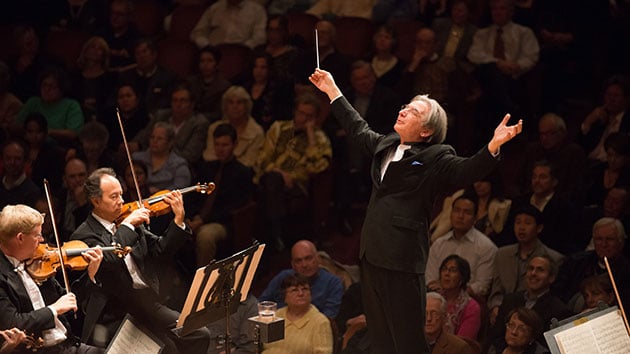
Bartók’s Piano Concerto No. 2 is widely regarded as one of the most difficult and technically demanding pieces in the repertoire, and it takes an exceptionally virtuosic pianist with amazing expressive powers to tackle it.
New York’s Jeremy Denk is such a pianist.
Denk (b. 1970) was in town as soloist with the San Francisco Symphony, here to demonstrate his phenomenal musical and technical abilities and help the audience make sense of Bartók’s percussive concerto. The orchestra was robustly well-conducted by Michael Tilson Thomas, who traditionally sticks around for the first few series of concerts that follow the opening of the season.
Béla Bartók (1881–1945) wrote his second concerto in 1930–31 as an addition to his own performance catalogue as touring composer-pianist. The piece was conceived at a time when the composer was fascinated by the musical forms and structures of the Baroque, and especially by Bach’s use of counterpoint.
His monumental piano concerto has enormous impact. On the surface, the music may seem impenetrable and cacophonous, but the symmetrical structure can be easily appreciated, along with the musical themes (based on Hungarian folk music) and their transformations. And there are some friendly and distinctly Bach-sounding passages.
Hungarian-born pianist Andràs Schiff notoriously called Bartók’s second piano concerto a “finger-breaking piece” that often left him “with a keyboard covered by blood.” Denk didn’t shed any blood last Saturday, but seeing him hammer the keyboard makes it easy to understand just how that could happen. I felt sorry for the Steinway.
Denk himself, meanwhile, made it all look effortless. He has a long-term affinity with Bartók’s music, stemming directly from his teacher at the Indiana University School of Music in Bloomington, Hungarian pianist György Sebök (1922–1999) who studied with Bartók.
In spite of the concerto’s frenetic pace and sometimes manic energy, Denk’s reading exuded immense control, but he could not avoid that his solo part was frequently drowned out by massive outbursts in the orchestra. This even happened in the first movement, when it was just winds and percussion accompanying the soloist.
As reward for the standing ovation he received, Denk treated the audience to a precious piece that was in almost every aspect the musical antithesis of the Bartók concerto.

Suddenly all fragile and innocent, on the same instrument that he was pounding into submission a few moments earlier, Denk offered the Adagio from Mozart's piano Sonata No. 16 in C Major, K545. It served as a palate cleanser for the second musical monument of the evening, a scintillating performance of the Symphonie Fantastique by Hector Berlioz (1803–1869), which found MTT and the San Francisco Symphony both on familiar ground and in excellent form.




